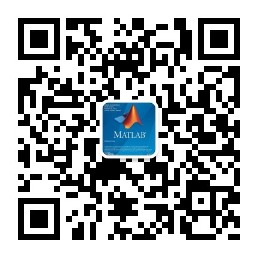
本文为荷兰代尔夫特理工大学(作者:I.A.F. Snuverink)的硕士论文,共128页。
在超光谱(HS)成像中,每一个像素都要捕获波长光谱,这些光谱代表材料性质,即光谱特征。因此,HS图像的分类是基于材料属性的。本文介绍了一种在不同环境条件下的固定场景中进行HS图像像素分类的框架。TNO已经记录了一年中的HS图像,在日出和日落之间每小时记录一次。因此,该数据集受光照、天气和季节条件的影响,使记录数据的质量下降。传统上,大气模型被用于校正这些效应的影响,从而恢复光谱信息。在这项工作中,训练一个全卷积网络(FCN)来执行分割任务,该任务还通过学习实现环境条件的校正,从而避免了大气模型及图像归一化的使用。
单一的FCN(U-Net)是为了解决15类分割问题,区分阔叶林、草、沙地、沥青和人工草地等。为了训练神经网络,训练数据集需要相应的地面实景特征。设计了一种稀疏的带注释掩模,它适合于覆盖整个记录周期的图像。在单个场景分割中,使用稀疏掩模进行注释是一种允许移动对象边界的快速方法。此外,它避免了混合像素的引入。为了减少计算量,训练数据集是由原始HS图像中提取的许多小块图片构成的。因此,利用局部频谱空间信息对网络进行训练。标准的U-Net训练被证明限于在相对恒定的环境条件下训练数据集。为了进一步增强季节间的泛化,重新排列网络权重,以便保持相似数量的权重。该网络对于训练复杂的数据集是非常重要的,因为它能够提取更多的信息特征。
使用简单训练数据集(即相对恒定的环境条件)训练的标准U-Net对于晴雨天的测试图像在一天中任何时间都能达到A>94%的准确率。然而,该模型在有限的时间段内是有效的。使用复杂训练数据集(即高度变化的环境条件)训练的定制U-Net产生的精度在86 - 93%之间。该模型的有效期较长,能够覆盖多个季节。因此,实验表明分割精度与模型有效性的持续时间之间存在着折衷关系,而模型有效性的持续时间是由网络权值控制的。
In hyperspectral (HS) imaging, for every pixel a spectrum ofwavelengths is captured. These spectra represent material properties, i.e. thespectral signatures. So, classification of HS imagery is based on materialproperties. This thesis describes a framework to perform pixelwiseclassification of HS images of a fixed scene subject to varying ambientconditions. TNO has recorded HS images over the course of one year, every hourbetween sunrise and sunset. Therefore, this data set is subject to a range oflighting, weather and seasonal conditions, degrading the recorded data.Traditionally, atmospheric models are used to correct for these effects,recovering spectral information. In this work an Fully Convolutional Network(FCN) is trained to perform the segmentation task which also learns to correctfor ambient conditions, eliminating the need of implementing an atmosphericmodel or applying image normalization. A single FCN (U-Net) is implemented tosolve a five-class segmentation problem, distinguishing broad leaf trees,grass, sand, asphalt and artificial grass. To start training a neural network,the training data set requires a corresponding ground truth. A sparselyannotated mask is designed which fits images covering the entire recordingperiod. In single-scene segmentation, annotating using a sparse mask is a quickmethod which allows for moving object borders. Furthermore, it avoids inclusionof mixed pixels. In order to reduce computational load, the training data setis formed by many small patches taken from the original HS images.Consequently, the network is trained with local spectral-spatial information.Training the standard U-Net proves to be limited to training data sets underrelatively constant ambient conditions. In order to further enhancegeneralization over seasons, the network weights are rearranged so that asimilar number of weights is maintained. This network is essential for traininga complex training data set, as it is able to extract more informativefeatures. The standard U-Net trained with a simple training data set (i.e.relatively constant ambient conditions) achieves an accuracy A > 94% for both sunnyand rainy test images irrespective of time of the day. However, this model isvalid for a limited period of time. The customized U-Net trained with a complextraining data set (i.e. highly varying ambient conditions) yields segmentationswith an accuracy ranging between 86 and 93%. This model is valid for a longer periodof time, covering multiple seasons. So the experiments show that there is atrade-off between segmentation accuracy and duration of model validity, whichis controlled by network weight arrangement.
1 引言
2 项目背景与相关工作
3 神经网络设计
4 实验设计
5 训练数据集优化
6 实验结果
7 结论与建议
附录A 注释掩模
附录B Python源代码
附录C 实验细节
附录D 训练数据集优化的实验结果
附录E 时变条件的实验结果
附录F 提高泛化特性

下载英文原文地址:
http://page5.dfpan.com/fs/0lc4j202142931678b4/
更多精彩文章请关注微信号:
